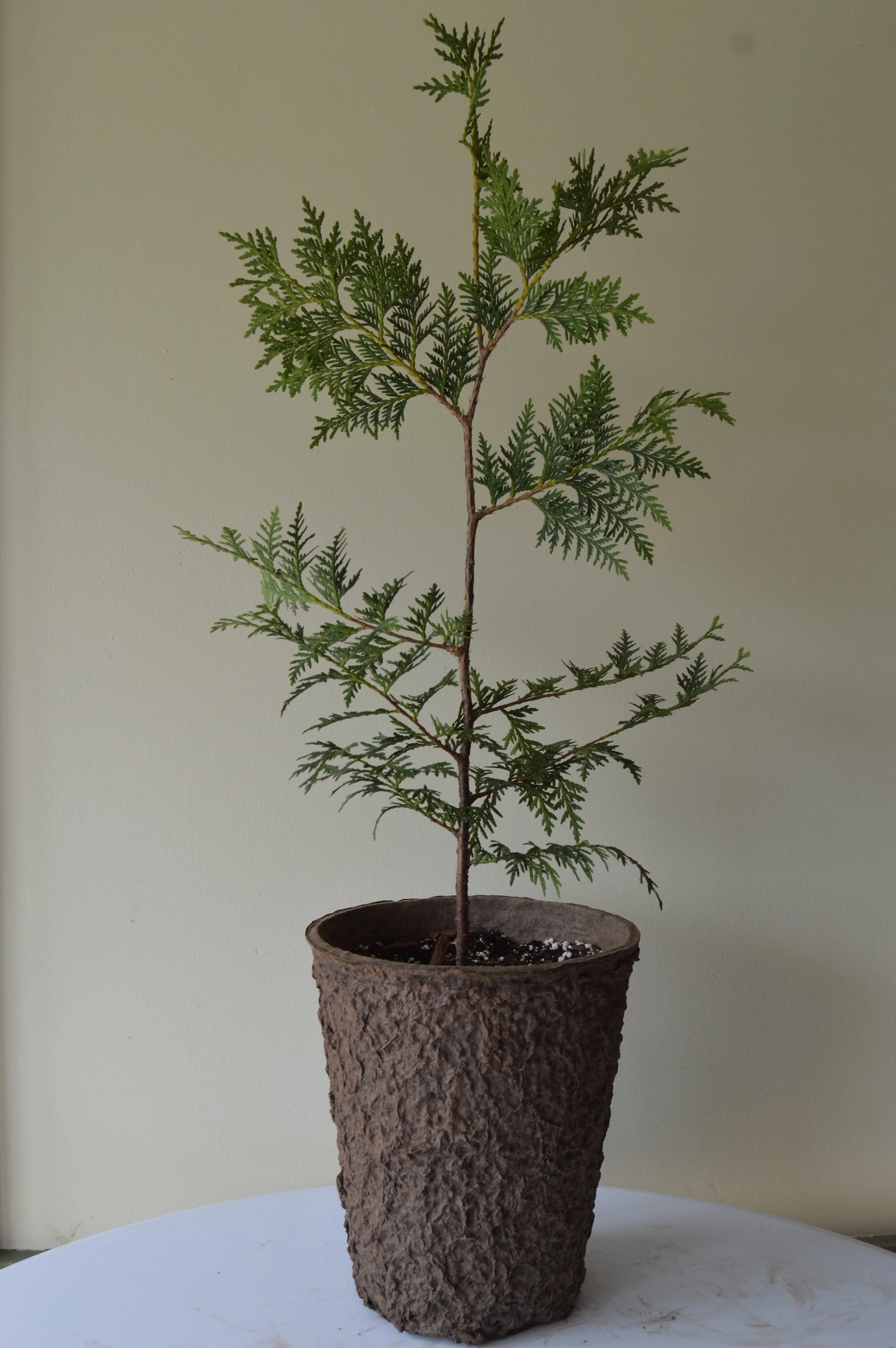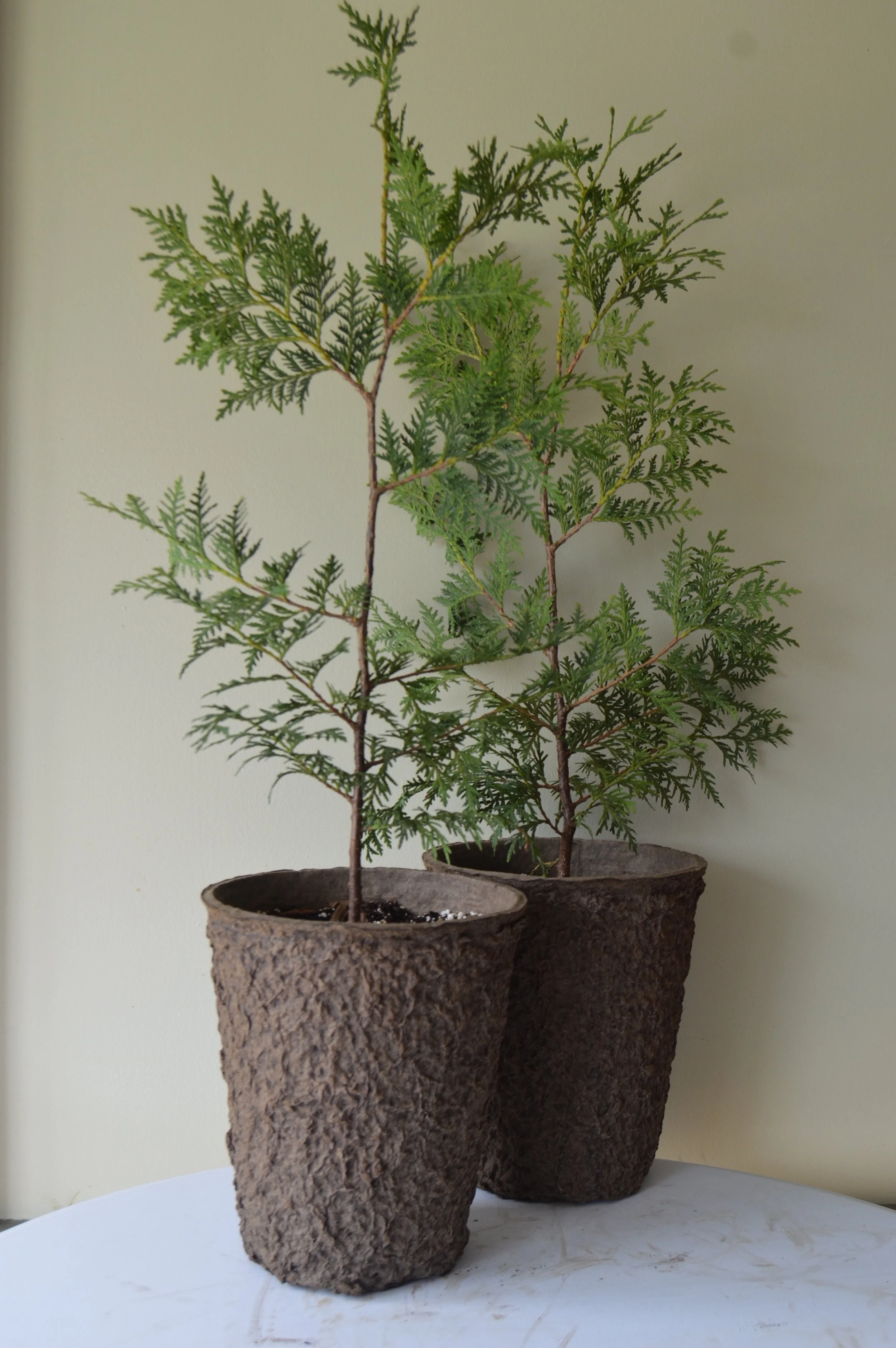Northern White Cedar ‘Nigra’
Thuja occidentalis
1 for $25
White Cedars occur naturally throughout Michigan, with the exception of a few southern counties. They are found in wetland areas of Washtenaw County, but grow under varied conditions in the northern part of the state.
‘Nigra’ is a selection of Northern White Cedar that has dense foliage and maintains a darker green color through the winter months than the species does. This variety is broadly pyramidal, and generally maintains a strong central leader without pruning.
White Cedars are surprisingly long lived, with some individuals reaching 800 years. Their leaves are very high in Vitamin C, and were once used as a treatment for scurvy. The wood of these trees is rot resistant and often used for fence posts, cedar shingles and logs cabins.
These trees are highly adaptable and generally pest free. These tall, narrow evergreens are one of the best screening trees available. The species can lose some of its bright green color in the winter, but selected cultivars generally maintain better winter coloration.
Deer herds often seek the shelter of cedar swamps in the winter and will browse on their leaves under harsh conditions. Squirrels and many types of birds eat their seeds.
Hardiness Zones: 2-8
Light Requirement: Full sun is best for dense foliage. They will grow in shady conditions but their foliage may be less dense.
Soil Preferences: Adapts to clay, loam or sandy soils.
Moisture Requirements: Average to wet soils are best.
Size: 30-40 feet, typically smaller under cultivation and for selected cultivars.
Growth Rate: Somewhat slow growth rate, 8-12" per year once established.
Potential Problems: The principal pests are arborvitae leafminer and black and red carpenter ants.

